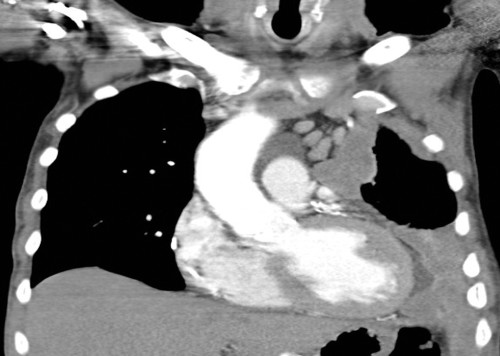Mesothelioma

Occupational Health Considerations
Malignant pleural mesothelioma is accounted for 80% by exposure to asbestos, with a 20- to 40-year latency period between exposure and development of malignancy; consequently the typical patient is in the sixth to ninth decade of life.
Fibre ingestion via the GI tract is also a risk factor
The latency is typically 40 years, so death occurs long after exposure
As asbestos fibres are so light and the dose required to promote mesothelioma so small, people living in households or in towns near mines have historically been at risk. Washing work clothes of asbestos worker is especially risky.
Risk industries are mining, ship building, construction or others where asbestos lagging or insulation board has been utilised.
Asbestos use was only curtailed in the mid 1970s in the UK.The first law suit for asbestos damages in the US was 1929.
Clinical Aspects
Key diagnostic factors :-
family history
history of asbestos exposure
age between 60 and 85 years
shortness of breath
chest pain
cough
anorexia
lethargy
Most patients present with shortness of breath and chest pain, which on investigation is often found to be associated with unilateral pleural effusion and pleural thickening.
Despite advances in treatment, malignant pleural mesothelioma remains a highly lethal malignancy with few long-term survivors: Less than one year survival time with treatment.
20% of mesothelioma cases are unrelated: being due to genetics or the Simian virus
My reflection

